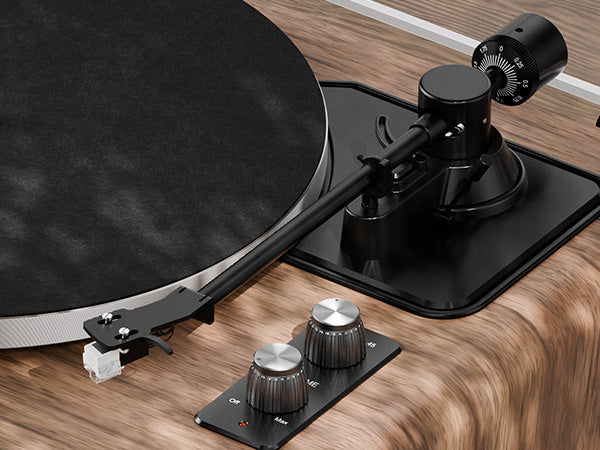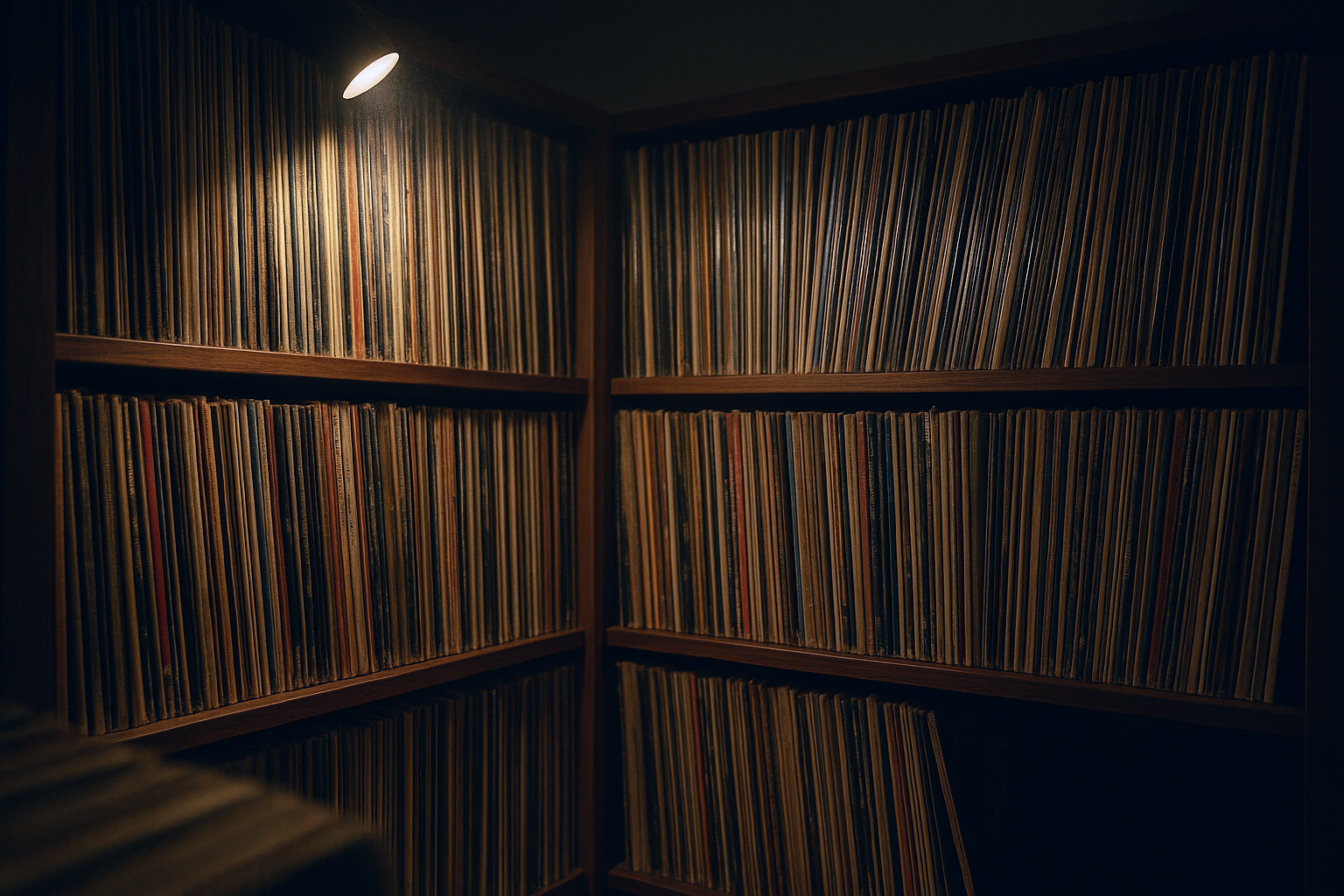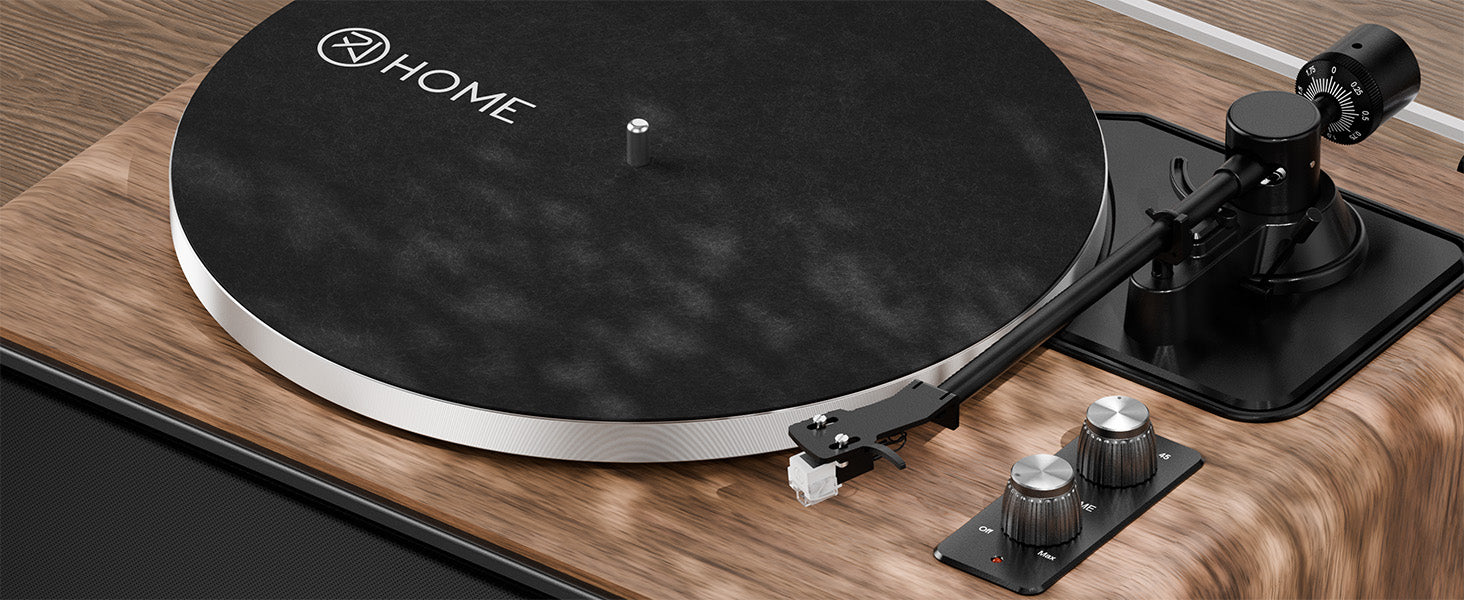In the burgeoning world of vinyl enthusiasm, you'll hear "record player" and "turntable" used almost interchangeably. For the casual listener, the distinction might seem like semantic hair-splitting. But for those venturing deeper into the analog realm, understanding the difference isn't just about terminology—it's about recognizing fundamental approaches to sound reproduction, system building, and the pursuit of audio fidelity. Let's cut through the marketing haze and explore what truly separates these two concepts.
The core of the confusion often stems from a simple fact: both a record player and a turntable play records. However, how they accomplish this and what comes with them is where the paths diverge significantly. This distinction often reflects a broader philosophy: the all-in-one convenience of a "record player" versus the dedicated, customizable performance of a "turntable" as part of a component system.
Defining "Record Player": The All-in-One Proposition
Think of a "record player" in its most common modern iteration, and images of suitcase-style units or budget-friendly, self-contained systems likely spring to mind. Historically, the grand console stereos of the mid-20th century also fit this bill.
Key Characteristics:
-
Integrated Design: The defining feature. A record player typically bundles the turntable mechanism (platter, motor, tonearm, cartridge), a phono preamplifier, an amplifier, and speakers into a single chassis or a closely integrated system with proprietary speakers.
-
Convenience & Simplicity: The primary selling point. Plug it in, put on a record, and you've got sound. No need to worry about matching components.
-
Portability & Aesthetics: Many are designed for easy transport or to fit a specific retro aesthetic, sometimes prioritizing form over sonic function.
The Human Angle & Practical Realities:
The appeal is obvious: simplicity for newcomers, a compact footprint for small spaces, often a lower initial cost, and a dose of nostalgia. For someone dipping their toes into vinyl, or perhaps re-discovering a dusty collection, the barrier to entry seems refreshingly low.
Fundamental Principles & Common Compromises:
However, this integration, while convenient, is almost always a story of compromises when viewed through an audiophile lens:
-
Vibration – The Arch-Nemesis: The cardinal sin of many all-in-one record players is the proximity of the speakers to the turntable mechanism. Speakers produce vibration. Turntables are designed to read microscopic vibrations in a record groove. When the speakers are in the same box, or even just very close and directly coupled, their vibrations can feed back into the tonearm and stylus. This acoustic feedback muddies the sound, causes mistracking (stylus jumping), and can even create a howling resonant loop at higher volumes.
-
Component Quality: To hit a low price point and fit everything into one package, sacrifices are inevitably made. This often translates to:
-
Rudimentary Tonearms: Often lacking crucial adjustments like tracking force, anti-skate, or azimuth, leading to suboptimal playback and potentially increased record wear.
-
Basic Cartridges & Styli: Typically ceramic cartridges with less refined styli, which can be less kind to your precious grooves and offer lower fidelity than good quality moving magnet cartridges.
-
Resonant Materials: Lightweight plastic plinths and casings are common, offering little defense against internal or external vibrations.
-
Underpowered Amplification & Small Speakers: Resulting in a sound that might be "loud enough" but lacks dynamic range, bass extension, and overall clarity.
-
-
Limited Upgradeability: What you buy is generally what you get. There's usually no path to upgrade the tonearm, cartridge (beyond a basic stylus replacement), or internal electronics.
An Iconoclastic Aside: Are all record players "bad"? Not for their intended purpose. For casual listening, for rediscovering old LPs without a significant investment, or for a specific decorative vibe, they can serve a function. But it's crucial to understand their inherent limitations, especially concerning sound quality and the gentle treatment of your vinyl. The notion that "it plays records, so it's good enough" quickly crumbles when sonic accuracy and record preservation become priorities.
Defining "Turntable": The Heart of a High-Fidelity System
A "turntable," in the audiophile lexicon, refers to a dedicated component whose sole purpose is to rotate a record at a precise, stable speed and allow a tonearm/cartridge assembly to accurately trace the record groove. It is the foundational source component in a dedicated audio system.
Key Characteristics:
-
Specialized Function: It does one job and aims to do it exceptionally well.
-
Requires External Components: A turntable requires (at a minimum):
-
A Phono Preamplifier: To boost the tiny signal from the cartridge to line level and apply RIAA equalization. This can be a standalone unit or built into an integrated amplifier or receiver.
-
An Amplifier (or Receiver): To further amplify the signal to drive speakers.
-
Speakers: To convert the electrical signal back into sound.
-
-
Emphasis on Performance & Build Quality: Resources are focused on critical elements like the motor, platter, bearing assembly, tonearm, and plinth construction to minimize noise and maximize speed stability and tracking accuracy.
The Human Angle & Practical Realities:
This approach appeals to those seeking superior sound quality, the ability to customize their system, and a pathway for future upgrades. It's the domain of the audio enthusiast who understands that each component in the signal chain plays a vital role.
Fundamental Principles & The Audiophile Advantage:
-
Isolation and Optimization: Separating components allows each to be designed and shielded optimally. The turntable is isolated from the vibrations and electrical noise of amplifiers and power supplies.
-
Superior Components: Manufacturers can invest in higher-quality motors (direct drive, belt drive with sophisticated speed control), heavier, more inert platters, precision bearings, and more sophisticated tonearms with fine adjustments.
-
Synergy and Customization: The ability to choose and match cartridges, phono stages, amplifiers, and speakers allows the listener to tailor the sound to their preference and room acoustics. This is a cornerstone of the audiophile experience, a philosophy we deeply embrace at XJ-HOME. We believe that a meticulously curated system, where each component complements the others, unlocks the true emotional power of music. Explore our offerings at https://xenonjade.com to see how quality source components form the heart of such systems.
-
Upgrade Path: As your listening skills develop or your budget allows, you can upgrade individual components—a better cartridge, a dedicated phono stage, a more powerful amplifier—without replacing the entire system.
The Evolving Landscape & Grey Areas
The lines can sometimes blur. Many excellent modern turntables, particularly in the entry to mid-fi categories, now include built-in, switchable phono preamplifiers. This adds convenience, allowing direct connection to powered speakers or any amplifier with a line-level input. Crucially, if the built-in preamp can be bypassed, the unit still functions as a true "turntable," offering an upgrade path to an external phono stage later. This is generally a welcome development, making quality analog accessible without sacrificing future potential.
Conversely, there are high-end "integrated audio systems" that might include a quality turntable section, but these are typically engineered to a much higher standard than mass-market "record players" and cater to a different clientele.
Why Does This Distinction Truly Matter?
Beyond mere semantics, the difference between a typical record player and a turntable-based system has tangible consequences:
-
Sound Quality Potential: This is the most significant factor. A well-chosen turntable and complementary components will almost invariably deliver a more detailed, dynamic, and musically engaging performance.
-
Record Longevity: The often rudimentary tonearms and heavier-tracking, less-refined styli on many all-in-one record players can cause accelerated wear to your vinyl collection. A properly set-up turntable with a quality cartridge treats your records with the care they deserve. For more on stylus care, the experts at Audio-Technica offer excellent advice.
-
Durability & Repairability: Component turntables, especially those from reputable brands, are often built to last and are more serviceable. Many all-in-one record players are essentially disposable if something goes wrong.
-
The Audiophile Journey: For many, the path starts with a simple record player. But as appreciation for the music and sound quality deepens, the desire for something more—the control, the fidelity, the engagement of a component system—often leads to the world of turntables.
Choosing Your Path: Convenience vs. Fidelity
Ultimately, the "right" choice depends on your individual priorities, budget, and how deeply you wish to engage with the vinyl hobby.
-
A record player can be a perfectly acceptable, fun, and affordable entry point for casual listening or rediscovering records, provided you understand its sonic limitations and potential impact on record wear.
-
A turntable-based system is the clear path for anyone serious about sound quality, building a collection, and experiencing the full depth and nuance that vinyl can offer. The initial investment and setup might be greater, but the long-term rewards in sonic pleasure and system flexibility are substantial. Understanding the role of each component, like the phono preamplifier (What Hi-Fi? has a good explainer on what a phono stage is and why you need one), is part of this rewarding journey.
Whether you opt for the immediate simplicity of a record player or the enduring quality of a turntable system, the goal is to connect with music. But an informed choice will ensure that connection is as rich, detailed, and sustainable as possible. Happy listening!





Leave a comment
All comments are moderated before being published.
This site is protected by hCaptcha and the hCaptcha Privacy Policy and Terms of Service apply.